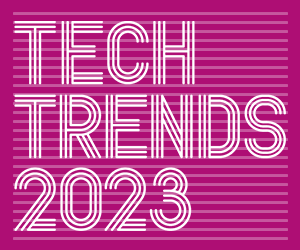Since the onset of the pandemic in 2020, retailers have worked hard to create engaging in-person and virtual experiences for consumers by balancing a robust mix of technologies, both online and in stores. And make no mistake: While online shopping has increased since 2020, 51 percent of shoppers prefer in-store shopping, according to a recent report by Vericast.
Moving into 2023, with a lot of hype surrounding artificial intelligence and immersive technologies, experts say retailers must choose wisely where to invest in order to curate the optimum retail experience — wherever consumers prefer to shop — to gain and retain customer loyalty.
According to IDC research on worldwide retail predictions for 2023, “the companies that are thriving are continuing to spend more year over year on technology, with extremely specific objectives,” including “improving the profitability of digital fulfillment and omni-channel operational complexity.”
Investments in edge computing, loss prevention and immersive technologies like the metaverse are on the horizon for many retailers. Brands will continue to see growth in their digital reach along with serving customers at brick-and-mortar shops. Here’s what retailers need to know about these burgeoning trends.
EXPLORE: How retailers are enhancing the customer experience with frictionless checkout.
Create a Firm Foundation for Edge Computing
In response to the pandemic, consumers have become more accustomed to interactive ways of shopping that use data to create more personal experiences. To meet the need, many brands are turning to edge computing, which involves the deployment of smaller server technologies in “edge” locations, such as stores.
Data collected there can be quickly transferred to a data center or analyzed on the spot to allow retailers to quickly create highly personalized services; for example, personal shopping assistants or recommendations for consumers based on the store environment.
Nearly 40 percent of retail IT has already been deployed using edge computing, and 77 percent of retailers are planning to increase edge computing technologies over the next two years. However, it’s vital that retailers have modern IT infrastructure to successfully operate on the edge, according to an S&P Global Marketing Intelligence report.
“To deliver those mission-critical use cases, retailers need to modernize their IT to support an intelligent and data-driven edge — IT infrastructure deployed in or close to store venues where consumers live, work and shop,” the S&P report notes.













